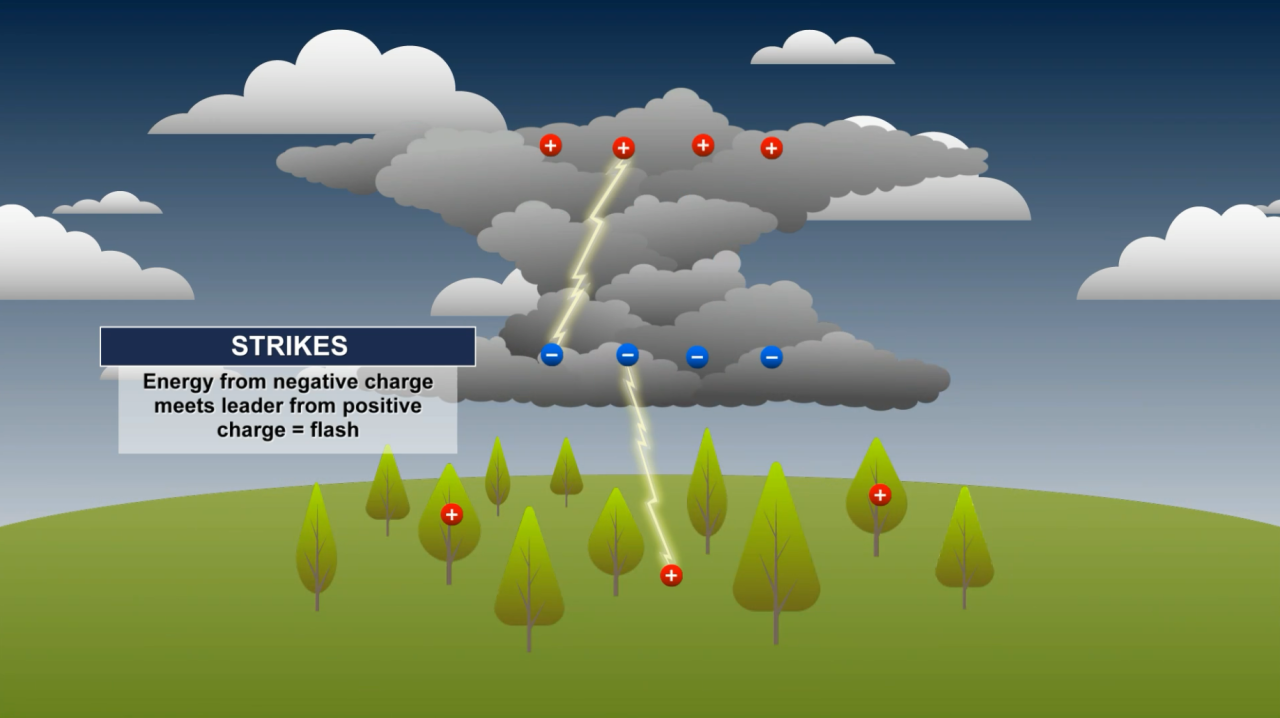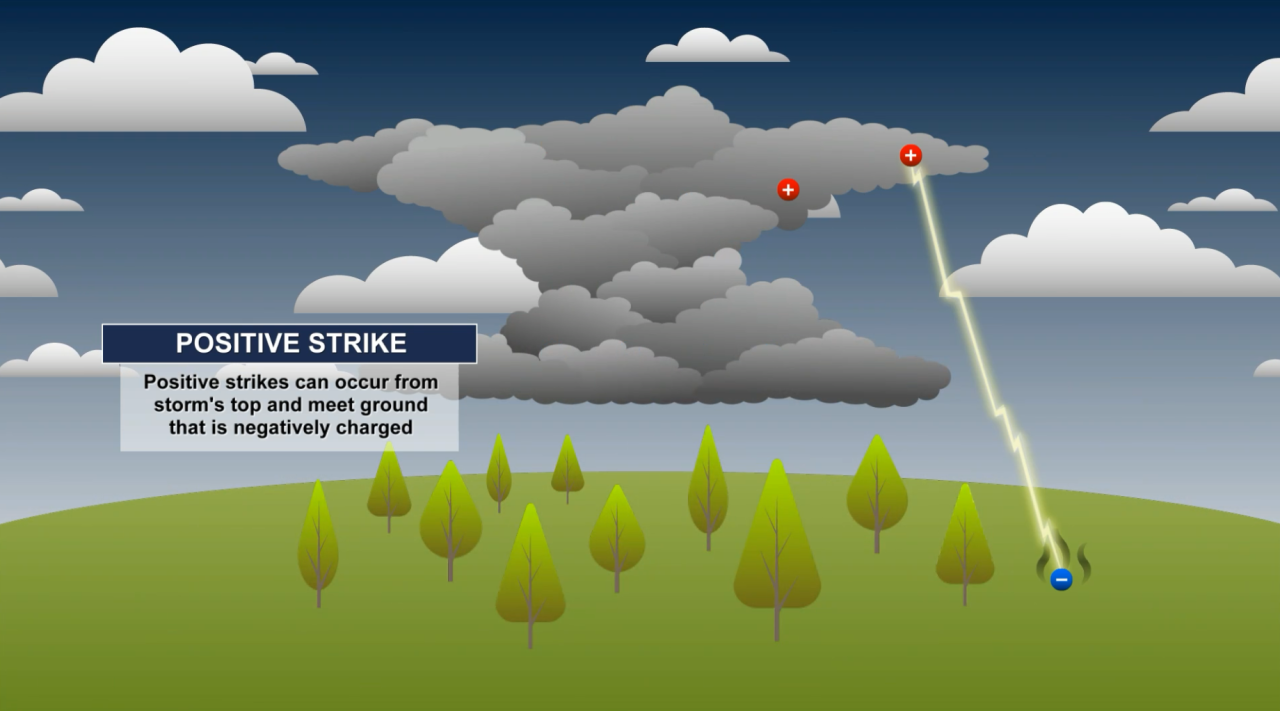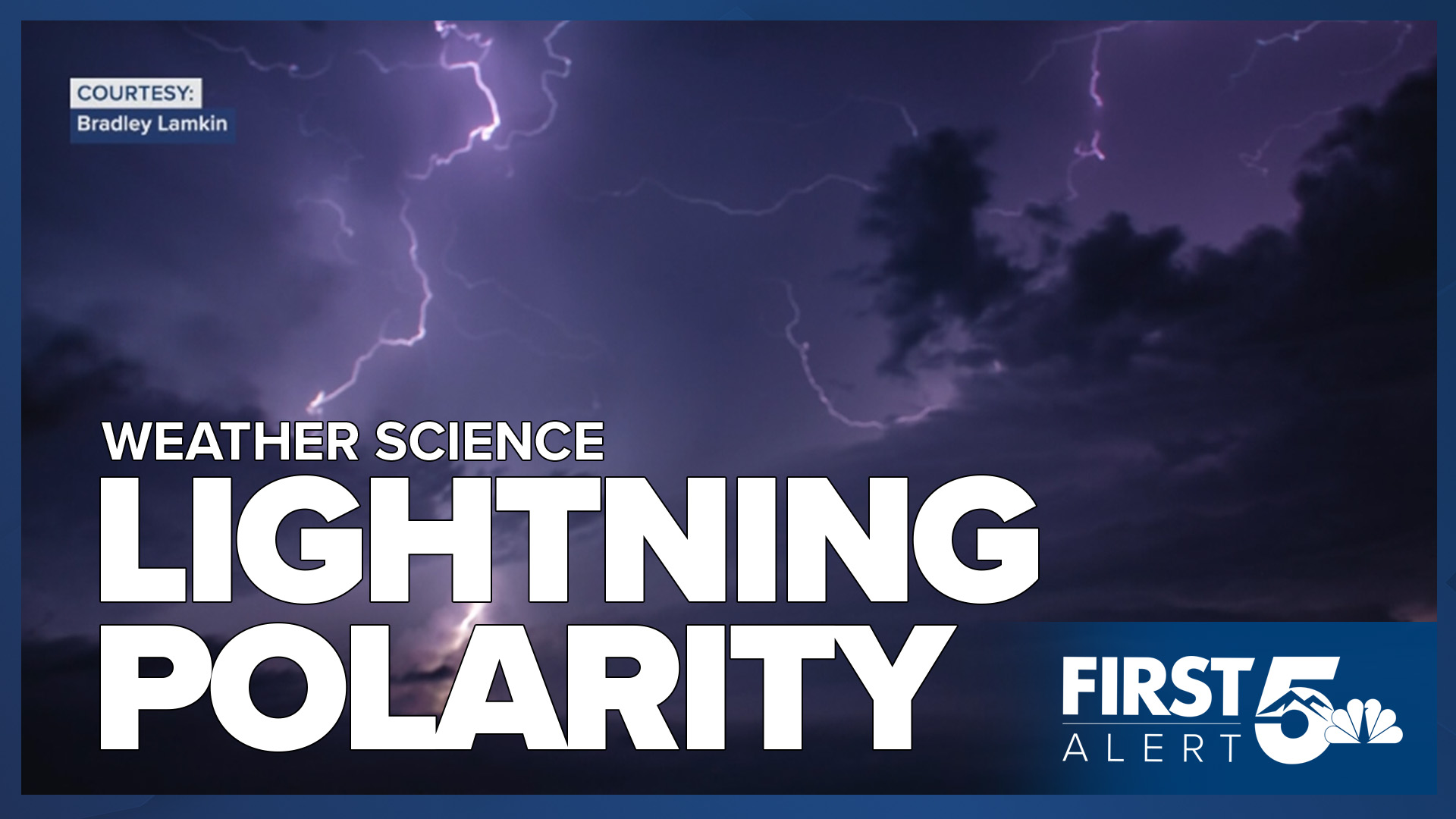Some lightning strikes are much more rare and can pack more of a punch. This is due to the different type of charge of the strike.
When thunderstorms form, raindrops and ice particles will rub against each other and create a charge.

Positive charges will move to the top of the storm cloud while the negative charges move towards the base. With the buildup of these charges this energy eventually has to be released. This is released in the form of lightning.

About 95% of the lightning strikes that we see are negative strikes. These are the ones that come directly underneath the storm. Positive strikes are much more rare, and this is due to the placement of the charges within the storm. These strikes will come from the top of the thunderstorm, usually out of the anvil.

There is much more current that flows through the positive strikes and makes wildfires much more common. These strikes can also strike in places where there are clear skies above. This makes this kind of lightning strike much more dangerous because of how deceiving it can be.
This is why it is best to head inside when you hear thunder. If you can hear it, you are close enough to the storm to get struck.
____
Have a question or story idea you would like the First Alert 5 Weather team to consider? Email: weather@koaa.com
Watch KOAA News5 on your time, anytime with our free streaming app available for your Roku, FireTV, AppleTV and Android TV. Just search KOAA News5, download and start watching.




